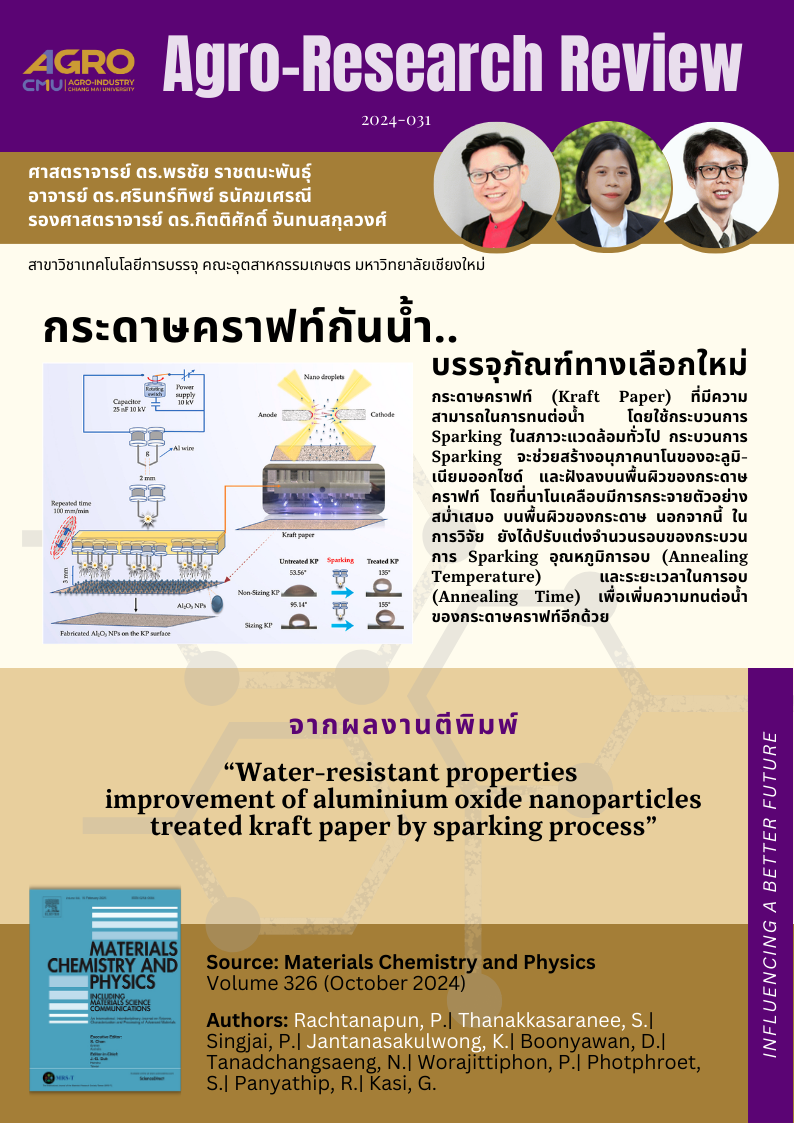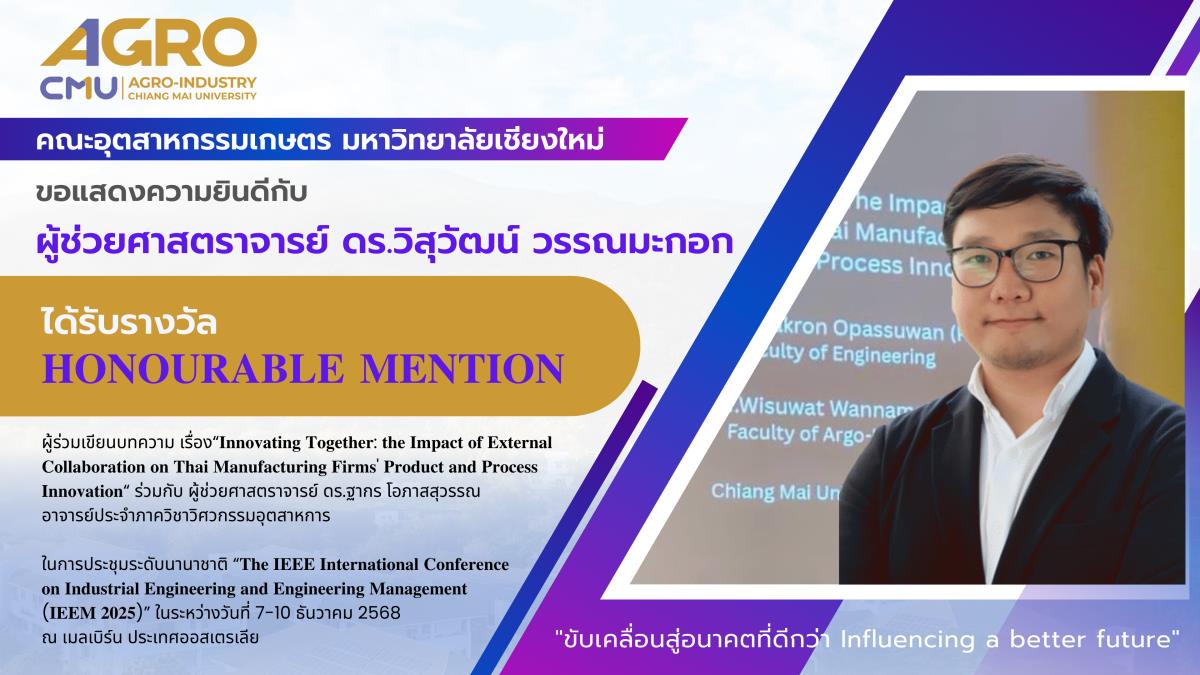
แนะนำงานวิจัย 2024-031 กระดาษคราฟท์กันน้ำ บรรจุภัณฑ์ทางเลือกใหม่
กระดาษคราฟท์ชนิด KP (Kraft Paper) ที่มีความสามารถในการทนต่อน้ำ โดยใช้กระบวนการ "sparking" ในสภาวะแวดล้อมทั่วไป กระบวนการ sparking จะช่วยสร้างอนุภาคนาโนของอะลูมิเนียมออกไซด์ และฝังลงบนพื้นผิวของกระดาษคราฟท์ชนิด KP โดยที่นาโนเคลือบมีการกระจายตัวอย่างสม่ำเสมอบนพื้นผิวของกระดาษ นอกจากนี้ ในการวิจัยยังได้ปรับแต่งจำนวนรอบของกระบวนการ sparking อุณหภูมิการอบ (annealing temperature) และระยะเวลาในการอบ (annealing time) เพื่อเพิ่มความทนต่อน้ำของกระดาษคราฟท์ชนิด KP อีกด้วย
KP Kraft Paper with water-resistant properties is developed using the "sparking" process under ambient conditions. The sparking process facilitates the creation of aluminum oxide nanoparticles, which are embedded onto the surface of the KP Kraft Paper. The nano-coating is evenly distributed across the paper's surface. Furthermore, the research optimized the number of sparking cycles, annealing temperature, and annealing time to enhance the water resistance of the KP Kraft Paper.
Topic: Water-resistant properties improvement of aluminium oxide nanoparticles treated kraft paper by sparking process
Authors: Rachtanapun, P.| Thanakkasaranee, S.| Singjai, P.| Jantanasakulwong, K.| Boonyawan, D.| Tanadchangsaeng, N.| Worajittiphon, P.| Photphroet, S.| Panyathip, R.| Kasi, G.
Abstract:
This study aims to improve the hydrophobicity of non-sizing Kraft paper (KP) surfaces using nanoparticle coating through the sparking process. The aluminium oxide nanoparticles (Al2O3 NPs) were used for surface modification on KP through the sparking process, optimizing with varying sparking cycles (5–20 times), annealing temperatures (60–120 °C), and annealing times (1–3 h). Then, the Al2O3 NPs treated KP were examined by XRD, FT–IR, SEM, EDX, and AFM, respectively. The water contact angle (CA) was used to examine the water-resistant properties of the treated KP. The treated KP with varying sparking cycles up to 15 times showed higher surface coverage and enhanced fine roughness surface on the treated KP. The fine roughness surface of KP induced hydrophobicity (126° of CA) on the surface of KP at 15 sparking cycles. Similarly, the higher CA for hydrophobicity surface on treated KP from varying temperatures and times of the annealing process was demonstrated at 120° for 3 h. Therefore, the treated KP with 15 times of sparking cycle, annealing temperature at 120 °C for 3 h was defined as the optimized condition in this work. Furthermore, the developments of hydrophobicity and superhydrophobicity on the treated KP with CA at 135 and 155° were observed for the non-sizing and sizing KP, respectively. This indicated that the increased surface roughness and reduced surface energy of the treated KP simultaneously delayed the water absorption times on the KP surface. Consequently, the nano-treating of Al2O3 NPs using the sparking process shows the promising feature of inducing superhydrophobicity on the KP surface, which can produce a water-repellent corrugated box as an alternative packaging material.
Keywords: Annealing; Contact angle; Hydrophobicity; Surface coating; Surface roughness
View at publisher: https://www.sciencedirect.com/science/article/abs/pii/S0254058424009519?via%3Dihub
#อกมช. #agrocmu #CMU





